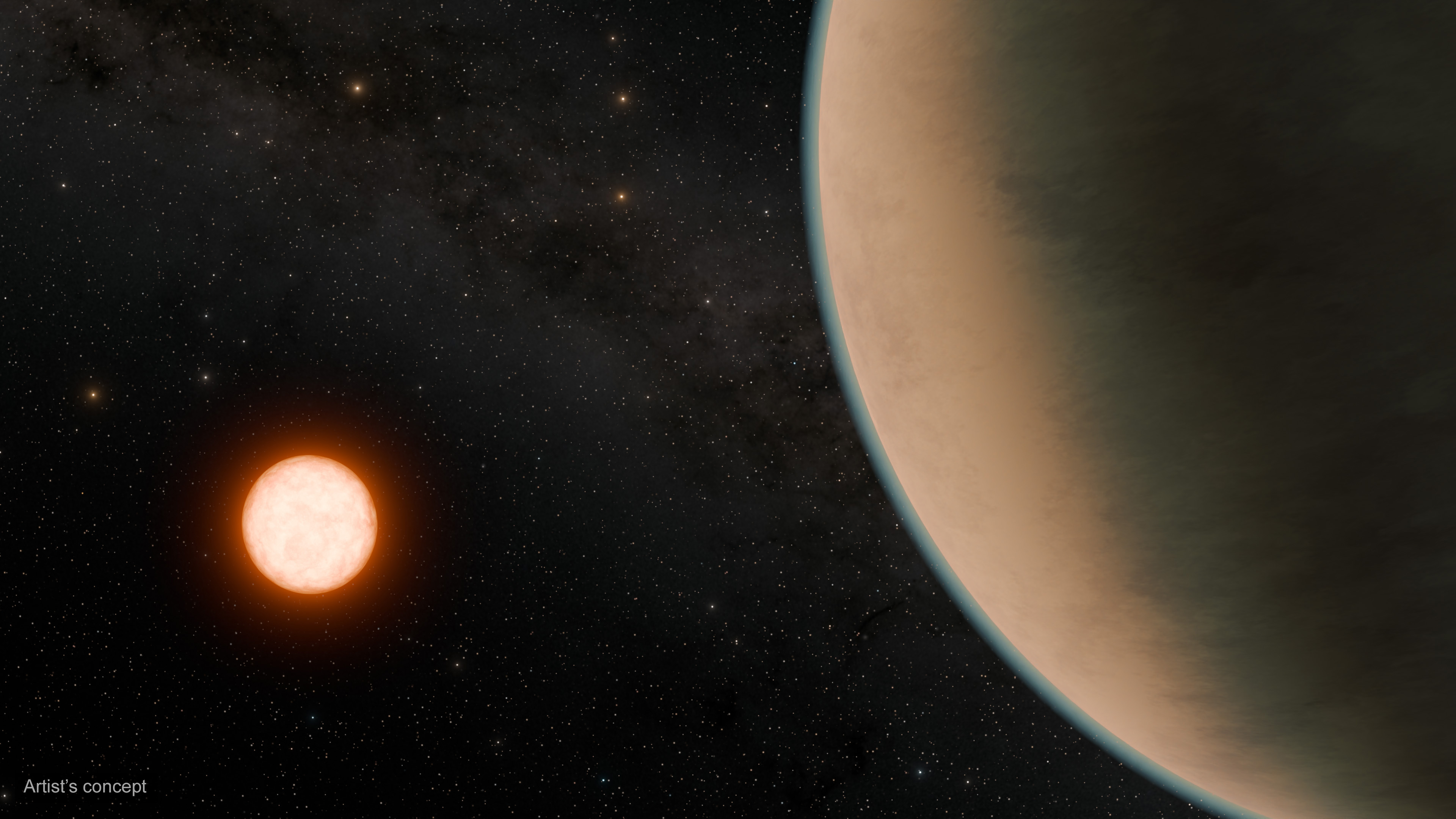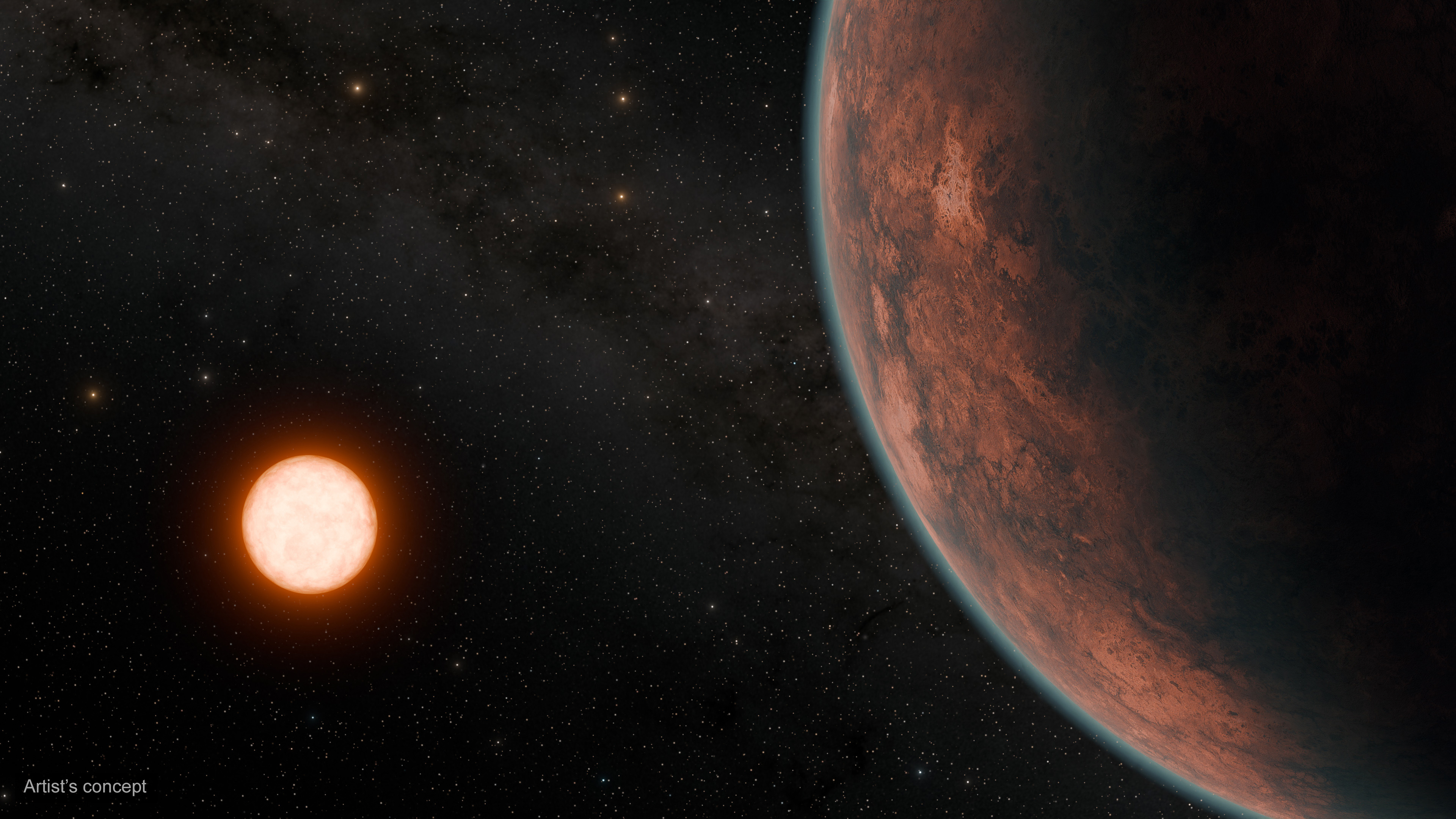In a remarkable collaborative effort, scientists from NASA, the European Space Agency, and various universities have discovered Gliese 12 b, an Earth-like planet located a tantalizing 40 light years away.
This groundbreaking find has the astronomical community buzzing with excitement over the potential for further understanding the conditions that make planets habitable.
Characteristics of Gliese 12 b

Size and Orbit: Close to Earth’s Size
Gliese 12 b, while slightly smaller than Earth and closer in size to Venus, has captured the attention of researchers due to its 12.8-day orbital period around a cool, red dwarf star.
This intriguing combination of size and proximity to its host star sets the stage for a fascinating study of the planet’s potential habitability.
Masayuki Kuzuhara, a project assistant professor at the Astrobiology Centre in Tokyo, who co-led one research team with Akihiko Fukui, emphasized the significance of the discovery, stating, “We’ve found the nearest, transiting, temperate, Earth-size world located to date.”
“Although we don’t yet know whether it possesses an atmosphere, we’ve been thinking of it as an exo-Venus, with similar size and energy received from its star as our planetary neighbour in the solar system.” – Masayuki Kuzuhara
Surface Conditions: Temperature and Potential Habitability

One of the most intriguing aspects of Gliese 12 b is its estimated surface temperature of 42°C, which is remarkably similar to the scorching temperatures experienced during the 2022 UK heatwave.
While this may seem uncomfortably warm by Earth standards, it falls within the range of temperatures that could potentially support liquid water and, consequently, life.
However, the question of habitability hinges on a critical factor that remains unknown: the presence and composition of Gliese 12 b’s atmosphere.
As Dr. Thomas Wilson from the University of Warwick pointed out, “Planets like Gliese 12 b are few and far between, so for us to be able to examine one this closely and learn about its atmosphere and temperature is very rare.”
Stellar Environment: The Red Dwarf Star

Gliese 12 b’s host star, Gliese 12, is a cool, red dwarf located in the constellation Pisces.
With a size of only 27% that of our Sun and a surface temperature of around 60% of the Sun’s, this diminutive star provides a unique environment for its orbiting planet.
The planet’s proximity to its star, at just 7% of the Earth-Sun distance, means that it receives 1.6 times more energy than Earth does from the Sun.
This increased energy input, combined with the star’s cooler temperature, creates a delicate balance that could potentially allow for the existence of liquid water and life on Gliese 12 b’s surface.
| Characteristic | Gliese 12 b | Earth |
|---|---|---|
| Size | Slightly smaller than Earth, closer to Venus | 1 Earth radius |
| Orbital Period | 12.8 days | 365.25 days |
| Surface Temperature | Estimated 42°C | Average 15°C |
| Energy Received from Star | 1.6 times Earth’s | 1 Earth value |
Potential for Human Habitability
Comparison with Venus and Earth

Gliese 12 b’s similarity in size to Venus has led some researchers to dub it an “exo-Venus.”
However, the comparison goes beyond mere size.
Like Venus, Gliese 12 b receives a higher amount of energy from its star compared to Earth, which could have significant implications for its atmosphere and surface conditions.
On the other hand, Gliese 12 b’s surface temperature is estimated to be much lower than Venus’s scorching 460°C, and more akin to Earth’s.
This delicate balance between size, energy input, and temperature has piqued the interest of scientists searching for potentially habitable worlds beyond our solar system.
“Even though GJ12b is about 15 times closer to its star than Earth is to our Sun, because it orbits such a small star the temperature on the planet may be quite similar to that on Earth.” – Dr. Vincent Van Eylen, UCL
Atmospheric Unknowns

The key to determining Gliese 12 b’s habitability lies in understanding its atmosphere.
As Dr. Van Eylen pointed out, similar temperatures to Earth don’t necessarily guarantee habitability; the presence and composition of the planet’s atmosphere play a crucial role.
If Gliese 12 b possesses a substantial atmosphere, it could potentially retain heat and maintain a temperature suitable for liquid water on its surface.
Conversely, the absence of an atmosphere or the presence of a toxic one would render the planet uninhabitable, regardless of its promising surface temperature.
Unraveling the mysteries of Gliese 12 b’s atmosphere will be a primary focus for future research, as scientists seek to understand the conditions that make planets around other stars potentially habitable.
Scientific Significance of the Discovery
Insights into Exoplanetary Systems
The discovery of Gliese 12 b offers a unique opportunity to study the conditions that make planets habitable, particularly those orbiting close to their host stars.
Red dwarf stars, like Gliese 12, are the most common type of star in the Milky Way, making up approximately 75% of the galaxy’s stellar population.
Understanding how planets like Gliese 12 b retain or lose their atmospheres in the face of their stars’ intense radiation and magnetic activity could provide valuable insights into the prevalence of habitable worlds around these ubiquitous stars.
“Gliese 12 b represents one of the best targets to study whether Earth-size planets orbiting cool stars can retain their atmospheres, a crucial step to advance our understanding of habitability on planets across our galaxy.” – Shishir Dholakia, University of Southern Queensland
Technological Tools and Methodologies Used
Satellite Data Utilization
The discovery of Gliese 12 b was made possible through the analysis of data from NASA’s Transiting Exoplanet Survey Satellite (TESS) and the European Space Agency’s satellites.
These advanced tools allowed researchers to confirm the planet’s existence and determine its key characteristics, such as size, temperature, and orbital period.
Dr. Thomas Wilson from the University of Warwick played a crucial role in this process, using satellite data to verify Gliese 12 b’s properties.
“This is a really exciting discovery and will help our research into planets similar to Earth,” he stated, emphasizing the importance of these technological tools in expanding our understanding of exoplanetary systems.
Role of Advanced Telescopes
While satellite data has been instrumental in the discovery and initial characterization of Gliese 12 b, unraveling the planet’s atmospheric composition and potential habitability will require the power of advanced telescopes.
The James Webb Space Telescope (JWST), NASA’s $10 billion flagship observatory, is poised to play a significant role in this endeavor.
With its unparalleled sensitivity and spectroscopic capabilities, JWST will be able to analyze the light passing through Gliese 12 b’s atmosphere, revealing its chemical makeup and potentially detecting signs of life.
“Fortunately it’s also a very nearby star, so we will learn much more about the planet and its atmosphere with telescopes like JWST in the next years.” – Dr. Vincent Van Eylen, UCL
Challenges in Studying Distant Exoplanets
Distance and Observational Limitations
Despite the excitement surrounding the discovery of Gliese 12 b, studying a planet 40 light-years away comes with its own set of challenges.
The vast distance means that the light we observe from the planet is essentially a snapshot of its conditions 40 years ago, making real-time observations impossible.
Moreover, the current limitations of our observational technology make it difficult to directly image exoplanets, particularly those orbiting close to their host stars.
Researchers must rely on indirect methods, such as analyzing the subtle changes in a star’s light as a planet passes in front of it, to infer the planet’s properties.
As Dr. Thomas Wilson noted, “Sadly, this planet is a little far away for us to experience it more closely. The light we are seeing now is from 40 years ago – that’s how long it has taken to reach us here on Earth.”
The Role of International Collaboration in Exoplanet Research
Contributions from Global Research Teams
The discovery of Gliese 12 b is a testament to the power of international collaboration in advancing our understanding of the universe.
Researchers from institutions in the United States, Europe, Japan, and Australia worked together to detect and characterize this fascinating exoplanet.
This global effort, involving NASA, the European Space Agency, and numerous universities, highlights the importance of pooling resources and expertise in the search for potentially habitable worlds beyond our solar system.
“Thrillingly, this planet is the closest Earth-sized and temperature planet we know. The light we are seeing now is from 1984 [40 years ago] – that’s how long it has taken to reach us here on Earth.” – Dr. Thomas Wilson, University of Warwick
Implications for Future Space Exploration
New Targets for Missions
The discovery of Gliese 12 b and other Earth-like exoplanets has significant implications for the future of space exploration.
As we continue to identify potentially habitable worlds, these planets become prime targets for future missions designed to study their atmospheres and search for signs of life.
The detection of a habitable planet just 40 light-years away is particularly exciting, as it raises the possibility of sending a spacecraft to study the planet directly within the foreseeable future.
While such a mission would face numerous technological and financial challenges, the prospect of exploring a potentially life-bearing world in our cosmic neighborhood is a powerful motivator for continued research and investment in space exploration.
Advancements in Space Technology
To fully explore and characterize planets like Gliese 12 b, advancements in space technology will be essential.
From improved telescopes and spectrographs to more efficient propulsion systems and advanced life-detection instruments, the discovery of Earth-like exoplanets is driving innovation across multiple fields of space science and engineering.
As our technological capabilities continue to grow, so too will our ability to study distant worlds in unprecedented detail, bringing us closer to answering the age-old question of whether we are alone in the universe.
Educational and Public Interest
Increasing Public Engagement
Discoveries like Gliese 12 b have a unique ability to capture the public imagination and spark interest in astronomy and space science.
The idea of a potentially habitable world just 40 light-years away is both awe-inspiring and deeply humbling, reminding us of our place in the vast cosmic expanse.
As news of such discoveries spreads through media outlets and social networks, more people are inspired to learn about the wonders of the universe and the cutting-edge research being conducted to unravel its mysteries.
This increased public engagement is crucial for fostering support for scientific research and inspiring the next generation of astronomers, astrophysicists, and space explorers.
Conclusion: What Lies Ahead
The discovery of Gliese 12 b marks an exciting milestone in the search for potentially habitable worlds beyond our solar system.
With its Earth-like size and tantalizing surface temperature, this exoplanet has opened up new avenues for research and exploration, while also raising intriguing questions about the conditions necessary for life to emerge and thrive on other worlds.
As we continue to study Gliese 12 b and other Earth-like exoplanets, we stand on the cusp of a new era in our understanding of the universe and our place within it.
The coming years and decades promise to be filled with groundbreaking discoveries and thrilling insights, as we seek to unravel the mysteries of the cosmos and search for signs of life beyond Earth.

